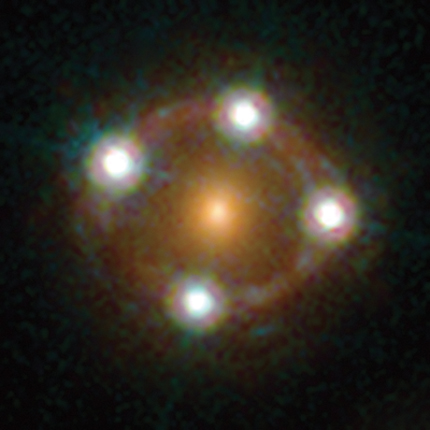A gravitational-lensing measurement of the Hubble constant
DOI: 10.1063/PT.3.3518
In 1929 Edwin Hubble confirmed that galaxies are receding from us with a speed proportional to their distance: v = H0d. As late as the mid 1990s, the value of the proportionality constant H0, the Hubble constant, was known only to be somewhere between 50 and 90 km/s per megaparsec (see the article by Mario Livio and Adam Riess, Physics Today, October 2013, page 41
Now the H0LiCOW (H0 Lenses in COSMOGRAIL’s Wellspring) collaboration has presented a comparably precise measurement based on its observations of three gravitationally lensed quasar systems. The H0LiCOW result, H0 = 71.9 + 2.4 − 3.0 km/s/Mpc, agrees with the standard-candle determination, but it is about 2 standard deviations distant from the CMB-derived value.
When light traveling from a quasar to Earth passes by a sufficiently massive galaxy, the galaxy can act as a lens that bends the quasar light. As a result, Earthbound astronomers see multiple images of the quasar as shown in the

ESA/HUBBLE, NASA, SUYU ET AL.

The Hubble constant determination from the CMB assumes, among other things, that the universe is flat and that dark energy is characterized by Einstein’s cosmological constant. If the conflicting values suggested by standard candles and lensed quasars hold up, some of the assumptions of cosmology’s now-standard model may need to be revised. (V. Bonvin et al., Mon. Not. R. Astron. Soc. 465, 4914, 2017, doi:10.1093/mnras/stw3006
